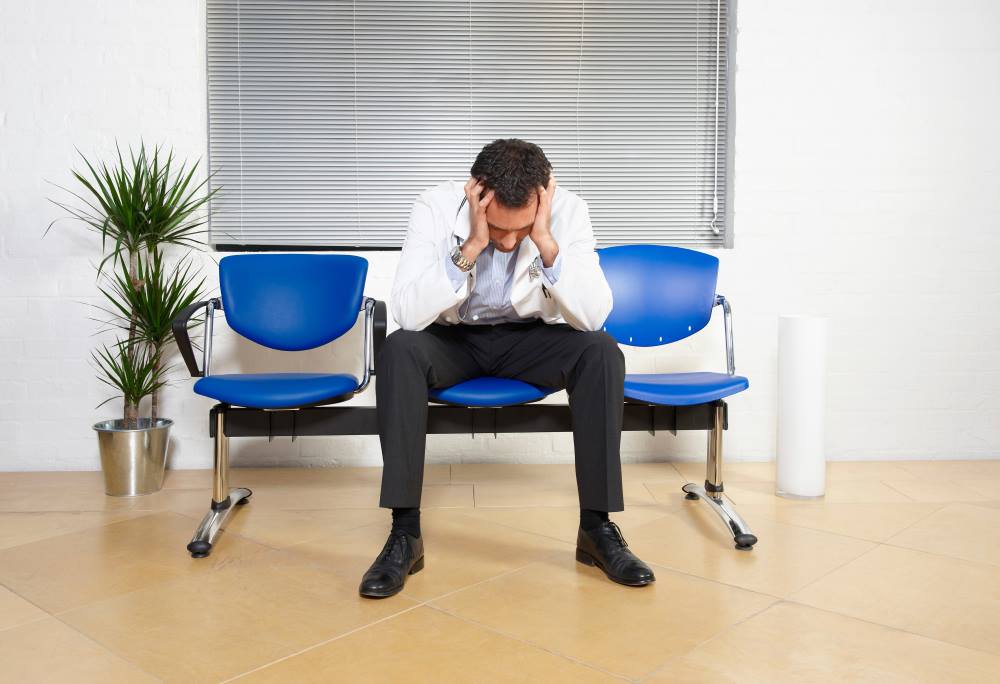
A Full Guide to Stress Incontinence in Men
Up to 15% of men over the age of 60 suffer from stress incontinence, according to the National Association for Continence. When managing stress incontinence, it is important to be aware of the main causes and treatment methods available for combatting the problem.
What is stress incontinence?
Stress incontinence is a type of incontinence that occurs when movements that put pressure on the bladder cause accidental leakage. It is important to remember that there is a large difference between stress incontinence and urge incontinence. Whereas stress incontinence causes accidental leaks when added pressure is put on the bladder, urge incontinence is where you have an urgent need to go to the bathroom and can not make it in time. People with stress incontinence do not necessarily feel that they need to go the bathroom, however, their bladder will leak involuntarily.
Some interesting facts and statistics about Stress Incontinence...
> Research on stress incontinence has shown that it is the most common form of urinary incontinence
> Stress urinary incontinence is the most prevalent form of incontinence
> Women are more likely to suffer from stress incontinence than men
> The estimates for severe incontinence in men in their 70’s and 80’s is half of that in women
What can cause stress incontinence in men?
Although stress incontinence is more common in women than men, there are a number of factors that commonly cause stress incontinence in men. These causes include:
Prostate enlargement is a very common cause of stress incontinence in men. As the Prostate becomes larger, it can block the urethra and cause involuntary leakage. In fact, the number one cause of stress urinary incontinence in men results from a procedure to remove a benign or a cancerous Prostate that has become enlarged, resulting in difficulties with controlling urination. Due to the sensitive location of the Prostate, the surgical removal of the Prostate causes disruption of either the anatomic continence mechanism or the nerves that influence controlled urination.

Obesity
The pelvic floor muscles support most of your body weight. Any excess weight you are carrying further strains these muscles, weakening them. Weak pelvic floor muscles do not support the bladder and bowel as efficiently as they should. If you are significantly obese, you may notice leakage doing activities such as coughing and exercising.
Diabetes
Diabetes can affect your ability to control the muscles that open and close your bladder. Frequent urination is often then a consequence, which can lead to stress incontinence. Diabetes often makes the bladder overactive, causing stress incontinence when added pressure is applied to the bladder.
Temporary causes:
In addition to stress incontinence being caused by certain diseases and conditions, it can also be caused temporarily for a number of reasons. These can be simple habits such as drinking too much caffeine or alcohol, being constipated, having a urinary tract infection or dealing with depression or anxiety.
Certain medications are another possible cause of incontinence. These medications include over-the-counter cold medications that contain antihistamines or decongestants, diuretics used to treat high blood pressure and some medications used to treat depression.
Treatment for Stress Incontinence
The management of stress urinary incontinence is markedly different to that of urge urinary incontinence, which is treated pharmacologically. The management of male stress urinary incontinence consists of both conservative measures and surgical therapies. Conservative methods include pelvic floor muscle exercises and injection of urethral bulking agents. Options of surgical therapy can include treatment such as implantation of male slings and the artificial urinary sphincter.
Talking to a Doctor can help you to pinpoint the culprit of your stress incontinence. If you are recommended surgical therapy, your physician can perform diagnostic tests to evaluate the function and the exact cause of the leakage. Along with a physical exam and medical history, other tools such as a urine flow test, blood tests, cystoscopy, and urodynamic testing may be used to develop a clearer picture.
Changes you can make at home
You can make a number of changes at home to help treat stress incontinence. These changes can be as simple as limiting fluid intake at night time and avoiding known bladder irritants such as caffeine and alcohol. It is also recommended that you frequent try pelvic floor exercises. You may also want to try urinating more often to reduce the amount of urine that leaks and making your bowel movements more regular by taking dietary fibre or laxatives to avoid constipation. Quitting smoking to reduce coughing and bladder irritation can also help you to prevent unwanted leaks due to added pressure on the bladder. Avoiding food and drinks that irritate the bladder, such as spicy foods, carbonated drinks, and citrus fruits can have a huge impact on your quality of life.
As incontinence is often thought of as a taboo subject, many men avoid talking about stress incontinence or attempting to try treatment methods to help the condition. Gordon Muir, Consultant Urologist at King's College Hospital asserts, “Men will just not talk about it, so no-one really knows the true extent. It is an unrecognized and embarrassing problem which can ruin lives”. However, when dealing with stress incontinence, men should feel positive about the increasing number of treatment and management options available to them. It is important to be fully equipped with the correct products for any accidental leaks. You can read our guide on choosing an incontinence product for useful tips and information.
It is important to remember that with the correct products and treatment methods for stress incontinence, your quality of life and dignity can be restored.
 All About Incontinence | Allanda
All About Incontinence | Allanda